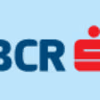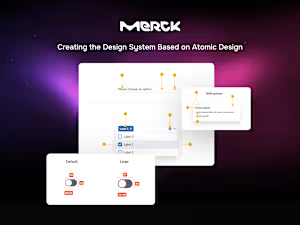
⚡️ Design Systems: Beyond Style Guides and UI Kits
Starting at
$
75
/hrAbout this service
Summary
FAQs
What is a design system, and why does my project need one?
A design system is a collection of reusable components, design standards, and guidelines that ensure consistency and efficiency across a digital product. It helps streamline the design and development process, saving time, reducing errors, and creating a cohesive experience across your brand.
How long does it take to build a design system?
The timeline varies depending on the complexity and scope of the project. A foundational system may take a few months, while a more extensive, scalable system for multiple platforms can take 8+ months. I’ll work with you to define a realistic timeline based on your needs.
Can we customize the design system to fit our brand and needs?
Absolutely! Each design system is tailored to align with your brand identity and product requirements. I work closely with clients to create components, tokens, and guidelines that reflect your unique style and meet your users’ needs.
How does a design system impact the development team?
A well-documented design system streamlines the development process by providing clear specifications and reusable components, allowing developers to implement designs consistently and efficiently. It also improves collaboration by reducing guesswork and facilitating handoff.
Will the design system be scalable as our product grows?
Yes, scalability is a core focus. The system is built using atomic design principles and design tokens, enabling you to expand and adapt it easily as your product evolves, saving time and maintaining consistency across future updates.
What's included
Beyond Style Guides: Building True Design Systems
I create true Design Systems, not to be confused with Style Guides or UI Kits—though I can provide those if needed. A Design System is a comprehensive framework that includes components, documentation, guidelines, tokens, and specifications, ensuring scalability, consistency, and collaboration between designers and developers.
Intuitive, Clean Components
Each component is optimized for usability, keeping the design system streamlined and efficient for designers and developers alike. The components are designed to reduce redundancy and enhance ease of use.
Design System Strategy and Planning
A clear roadmap for the design system is developed, outlining goals, scope, and timelines. This strategic approach ensures alignment across teams and a structured process for scaling and adapting the system as the project grows.
Component Creation and Documentation
Each component is crafted with precision and thoroughly documented, covering usage guidelines, visual specifications, and interaction behaviors. This ensures consistency, usability, and seamless handoffs between design and development.
Collaboration with Development Team
I work closely with the development team to ensure each component is implemented accurately. This includes providing detailed specifications, addressing any questions, and delivering the necessary resources or adjustments to support correct implementation.
Auto Layout for Responsiveness
Components are designed with auto-layout, enabling them to respond dynamically to different screen sizes and orientations, making the design system responsive and adaptable.
Dynamic Component Properties
Utilizing Figma’s advanced features, component properties are applied to minimize the need for multiple variants, enhancing flexibility while keeping the design system lean.
Accessibility Checklist
Accessibility is prioritized with a checklist that guides each component to meet industry standards. This includes considerations for contrast, keyboard navigation, and screen reader compatibility, making the system inclusive and compliant.
Components Analysis
An in-depth analysis of each component is conducted to evaluate its effectiveness, reusability, and alignment with the overall design goals. This analysis helps in identifying potential redundancies or areas for improvement.
Success Metrics for Design System
Success metrics are established to measure the design system’s impact, focusing on aspects like component reuse rate, consistency, user satisfaction, and time saved in the design and development process. These metrics provide insights into the system’s effectiveness and areas for future enhancement.
Design Tokens
Design tokens are established for core elements like colors, typography, spacing, and more, creating a flexible foundation for the design system. These tokens ensure that styles remain consistent across platforms and can be easily updated, adapting quickly to new requirements or brand changes.
Example projects
Recommendations
(5.0)


Client • Nov 22, 2024
Recommended
I had the pleasure of working with Adrian Stoian, a talented Lead UX/UI Designer. Adrian played a crucial role in building full UI/UX designs for apps, bringing both creativity and technical precision to the table. His deep understanding of user-centered design principles and attention to detail made a significant impact on the success of the projects we collaborated on. He consistently demonstrated a strong ability to create intuitive and visually appealing interfaces, while also ensuring a sea


Client • Nov 20, 2024
Recommended
Working with Adrian was always a great experience. He thinks outside the box and isn’t afraid to challenge ideas when he sees an opportunity to create more value. He brought a fresh perspective to our projects, and his input often helped us see things in a new way. On top of that, he’s just a really nice and fun person to work with—we had a great relationship. His designs were top-notch—beautifully crafted, super professional, and incredibly well-organized. He was a true asset to our team.


Client • Nov 20, 2024
Recommended
Adrian Stoian is one of the most talented Ui-UX designers that our company has worked with across the years, he is quick to deliver quality work, that is very hard to come by! If you have not worked with him in the past, and are looking for a senior and highly skilled Designer, then look no further as you are in great hands! I highly recommend him!

Client • Nov 19, 2024
Recommended
I had the pleasure of collaborating with Adrian on a recent project, and I couldn’t be happier with the experience. He is a talented UX/UI designer with a keen eye for detail and creativity. His communication was exceptional, keeping us informed at every stage of the process. The final results were not only visually impressive but also highly functional and user-friendly. I highly recommend Adrian!

Client • Nov 19, 2024
Recommended
Adrian has consistently achieved outstanding results for multiple clients I’ve worked with, all of whom extended his contract beyond the initial term. He's the one you want to contact for Product Design and/or Design systems. Beyond that, Adrian is a great mentor and a highly capable technical interviewer - this showcases his ability to not only deliver high-quality work but also to support and uplift those around him.

Client • Nov 19, 2024
Recommended
I had the pleasure of collaborating with Adrian, a highly skilled and dedicated Senior UX/UI Designer. Throughout our collaboration, Adrian consistently demonstrated an exceptional ability to create intuitive and user-focused designs while maintaining a strong attention to detail. His expertise in UX and UI design, coupled with his proactive approach and clear communication, made the entire process seamless and productive. I truly appreciated his professionalism and commitment to delivering outs

Client • Nov 19, 2024
Recommended
Adrian is not only an amazing UX/UI Designer, but an oustanding person. He is so driven and focused on what he needs to do, that the achievement of his goals is done so easy. Adrian's creativity is pushing every limit, making the project he's working on so fine tuned and complete. I've had the pleasure to work with him on different projects and I can say that he exceeded my expectations by a lot. Not only that he had a vision of where the project should be, but he leveled up on each occasion.


Client • Nov 19, 2024
Recommended
I am thrilled to share my experience with Adrian and his UI/UX design team for our banking digital platform. Their user-centric design approach exceeded expectations, balancing aesthetics with functionality. The platform is intuitive, user-friendly, with a modern, clean visual design. The team's iterative process and agile mindset ensured a well-refined product. Their collaborative efforts and leadership have transformed the platform into an indispensable tool, improving customer interactions.
Industries





